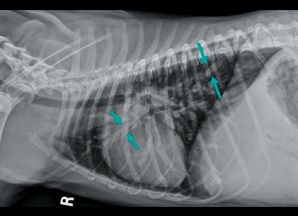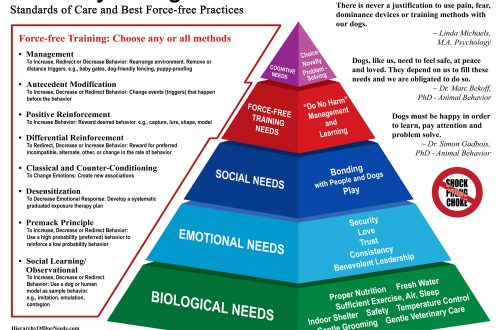
Pulmonary hypertension in dogs: symptoms and treatment
Pulmonary hypertension in dogs is a serious condition that occurs in many dogs, especially as they approach old age. Sometimes the cause is genetic in nature, but can be caused by various diseases. Therefore, this condition can be fatal and it is important to recognize the symptoms in time and take prompt measures. What you should pay attention to and what to do if the dog has signs of pulmonary hypertension – in the article.
Contents
High blood pressure in the lungs
The term “pulmonary hypertension” is used to refer to high blood pressure in the lungs. For dogs, this means that the blood pressure in the arteries and capillaries located in the lungs is much higher than normal. This condition can be caused by narrowing of the arteries and capillaries, blockage of the pulmonary artery – the main artery leading from the heart to the lungs. It can also be provoked by an increase in blood flow from the heart to the lungs in excess of permissible values. This situation can lead to enlargement of the heart and possibly to congestive heart failure. Then less oxygenated blood will flow to the lungs and other organs.
Causes of Pulmonary Hypertension in Dogs
Any type of heart or lung disease can be the cause. And it can also be provoked by kidney disease, inflammation of the pancreas and diseases of the adrenal glands, such as Cushing’s disease. Pulmonary hypertension can be caused by bronchitis, pneumonia, and some types of cancer. One of the main reasons for the development of this pathology in dogs are heartworms, which emphasizes the importance of their regular prevention. The disease can occur as a result of intrauterine development disorders, such as congenital heart disease. In fact, a large number of diseases can lead to an increase in blood pressure in the lungs of a dog. If your pet shows signs of this condition, you should definitely take him to the veterinarian. He will carefully examine the animal and understand what measures need to be taken.
Signs and symptoms
Symptoms of pulmonary hypertension may not appear immediately. By the time they arrive, the dog’s body will probably have been functioning for some time without an adequate supply of oxygen. If such a deficiency is left unattended, it can lead to death. It is important to show your four-legged friend to a veterinarian when the first signs appear. As the Dogtime resource writes, you should pay attention to the following symptoms:
- Difficulty recovering breathing.
- Rapid breathing.
- Cough.
- Fainting.
- Inadequate perception and confusion.
- Blood in saliva and nasal discharge.
- Blue or purple tint to the gums or skin.
- Strong fatigue.
- Decreased activity level.
- Refusal or unwillingness to move and play.
- Dramatic weight loss.
- Heart murmurs.
- Bloating.
- Expansion of the neck veins.
- Collapse.
Pulmonary hypertension in dogs: treatment
If the dog becomes choking on arrival at the hospital, he will most likely be given oxygen therapy, which may require hospitalization. The veterinarian will prescribe therapy aimed at opening the airways and removing excess fluid that has accumulated in the lungs. The doctor will then determine whether pulmonary hypertension has caused congestive heart failure. If so, the dog will need medication to treat the condition. For a more accurate diagnosis, you may need to consult a specialist.
In addition to continuing medication, care will require regular visits to the veterinarian to monitor heart and lung conditions, as well as changing medications if necessary. Regular monitoring of kidney function may be required. Periodically, the pet may be prescribed antibiotics to treat infections that occur against the background of this condition. Watch for any signs of a urinary tract infection, such as blood in the urine. It is important that the environment creates as little stress for the dog as possible and limits its physical activity.
It is better to consult with a veterinarian and determine how much you should limit the load on the animal. It is important to keep your dog away from extreme cold, heat, cigarette smoke, and any other exposure that can irritate the lungs and make breathing difficult. If necessary, your veterinarian will recommend a special low-sodium diet pet food.
Pulmonary hypertension in dogs: prognosis
Unfortunately, pulmonary hypertension in dogs is a progressive and incurable disease. It is important to understand that any type of treatment is aimed at improving the quality of life of the dog and its maximum extension. With regard to this condition, it is difficult to give a definite forecast. This means that the veterinarian will not be able to tell exactly how the dog will respond to treatment. Some pets only live a few weeks or months after diagnosis. However, many dogs respond quite well to treatment and, with proper home care, live for many months, and in some cases, years. One thing is certain, if left untreated, this condition will be fatal.
Pulmonary hypertension is a serious but not hopeless disease. With proper care, a dog will be able to enjoy life, be happy and feel comfortable for quite some time. During this time, the owner will have time to give her the best medicine of all – his love.





